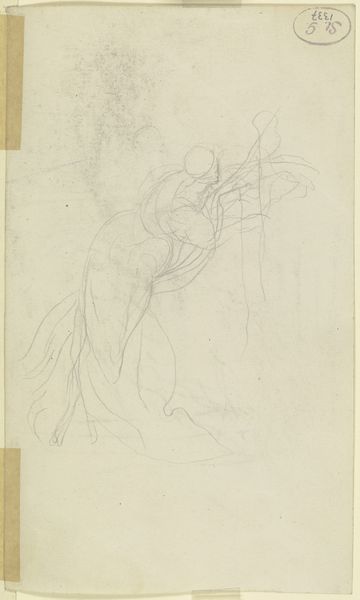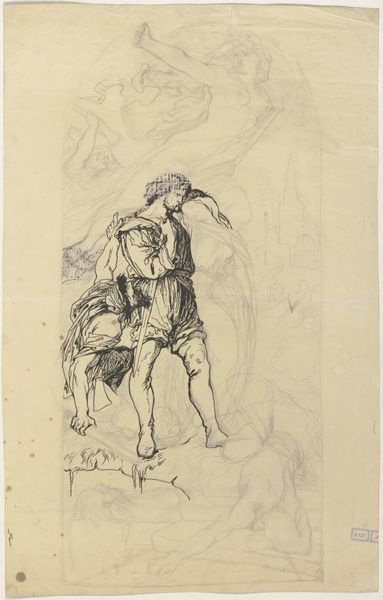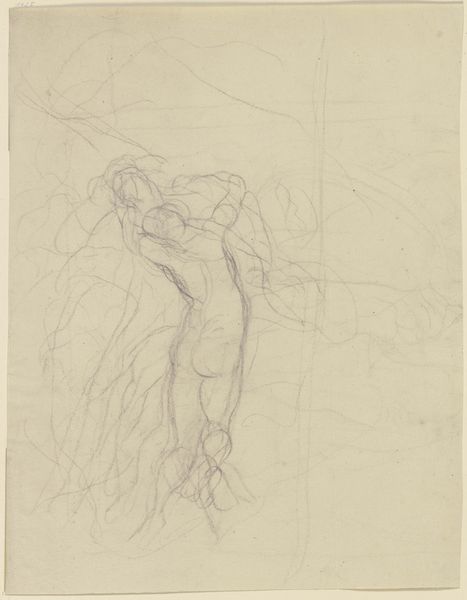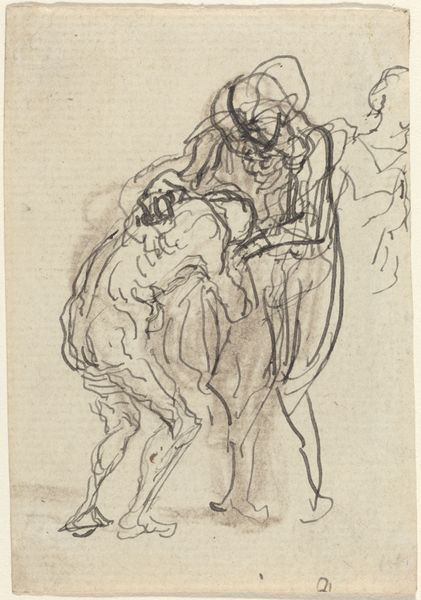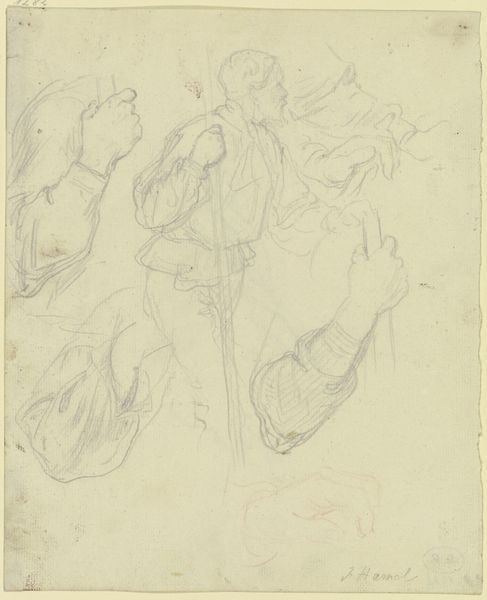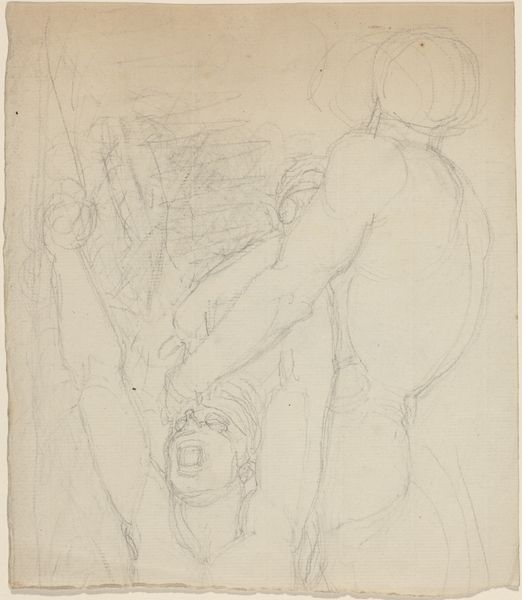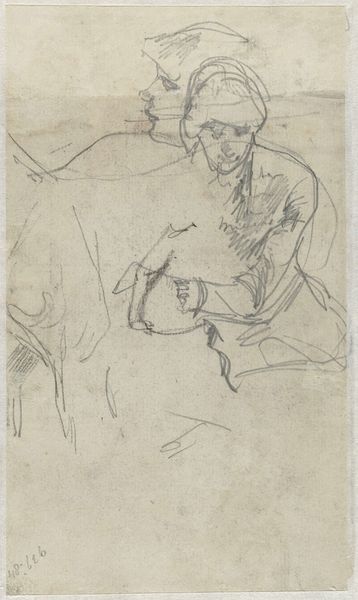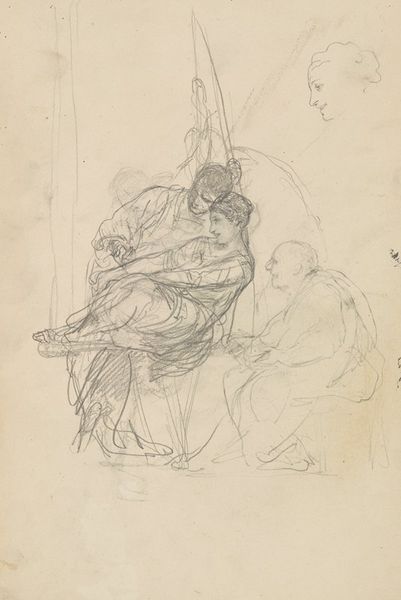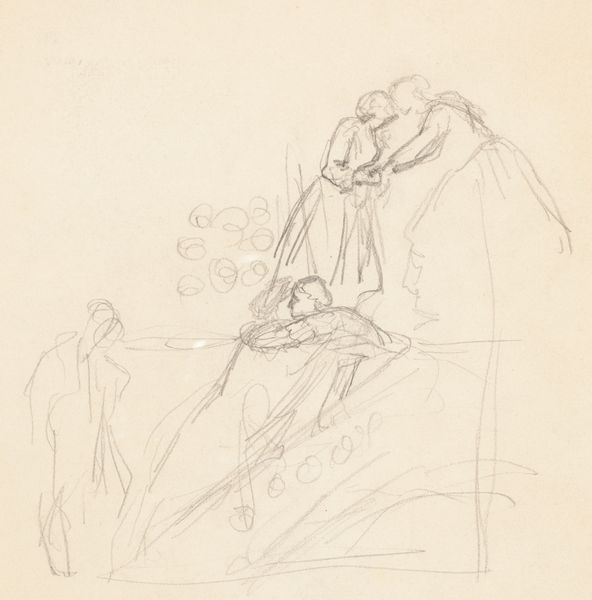![Time's Triple Bow [recto] by William Blake](/_next/image?url=https%3A%2F%2Fd2w8kbdekdi1gv.cloudfront.net%2FeyJidWNrZXQiOiAiYXJ0ZXJhLWltYWdlcy1idWNrZXQiLCAia2V5IjogImFydHdvcmtzL2YyMGI0NjgxLWI4MjEtNDM3Yi05NWNmLTA5M2Y5NWNkNzM5NC9mMjBiNDY4MS1iODIxLTQzN2ItOTVjZi0wOTNmOTVjZDczOTRfZnVsbC5qcGciLCAiZWRpdHMiOiB7InJlc2l6ZSI6IHsid2lkdGgiOiAxOTIwLCAiaGVpZ2h0IjogMTkyMCwgImZpdCI6ICJpbnNpZGUifX19&w=3840&q=75)
drawing, pencil
#
drawing
#
figuration
#
romanticism
#
pencil
#
line
Dimensions: overall: 30.7 x 24.3 cm (12 1/16 x 9 9/16 in.)
Copyright: National Gallery of Art: CC0 1.0
Editor: This is William Blake’s "Time's Triple Bow," a pencil drawing created around 1804-1807. The figures seem very fluid and the lines are light. It feels very ethereal and almost unfinished. What do you make of this drawing? Curator: Looking at Blake through a materialist lens, I see a rejection of the polished, refined artistic standards favored by the Royal Academy of his time. He's choosing pencil, a relatively accessible material, for a subject steeped in grand allegorical themes. Notice the layering and the visible process – how does that speak to the production of meaning in the work itself, rather than a seamless, divine creation? Editor: That’s a really interesting point. So, you’re saying his choice of materials and his visible process become a kind of commentary? Curator: Precisely. Think about the social context. Blake was deeply critical of the industrial revolution and its impact on labor and society. Could his raw, almost sketch-like technique be a subtle protest against the dehumanizing effects of mass production? Perhaps this technique references his own work in engraving, something he did for much of his life to pay his bills? Editor: I hadn't thought of it that way. It’s almost as if he is embracing the imperfections of the hand-made over the machine. Curator: Exactly. And how might this unfinished quality challenge the traditional boundaries between high art, with its emphasis on finished perfection, and craft, with its often more direct and utilitarian purpose? Do you think he considered his engravings a trade, or his "higher" art? Editor: That's something to consider... I definitely see it differently now, knowing a bit more about Blake's context and artistic choices. Thanks! Curator: Absolutely! Looking at the materials and process really allows us to get to the heart of Blake's message.
Comments
No comments
Be the first to comment and join the conversation on the ultimate creative platform.


